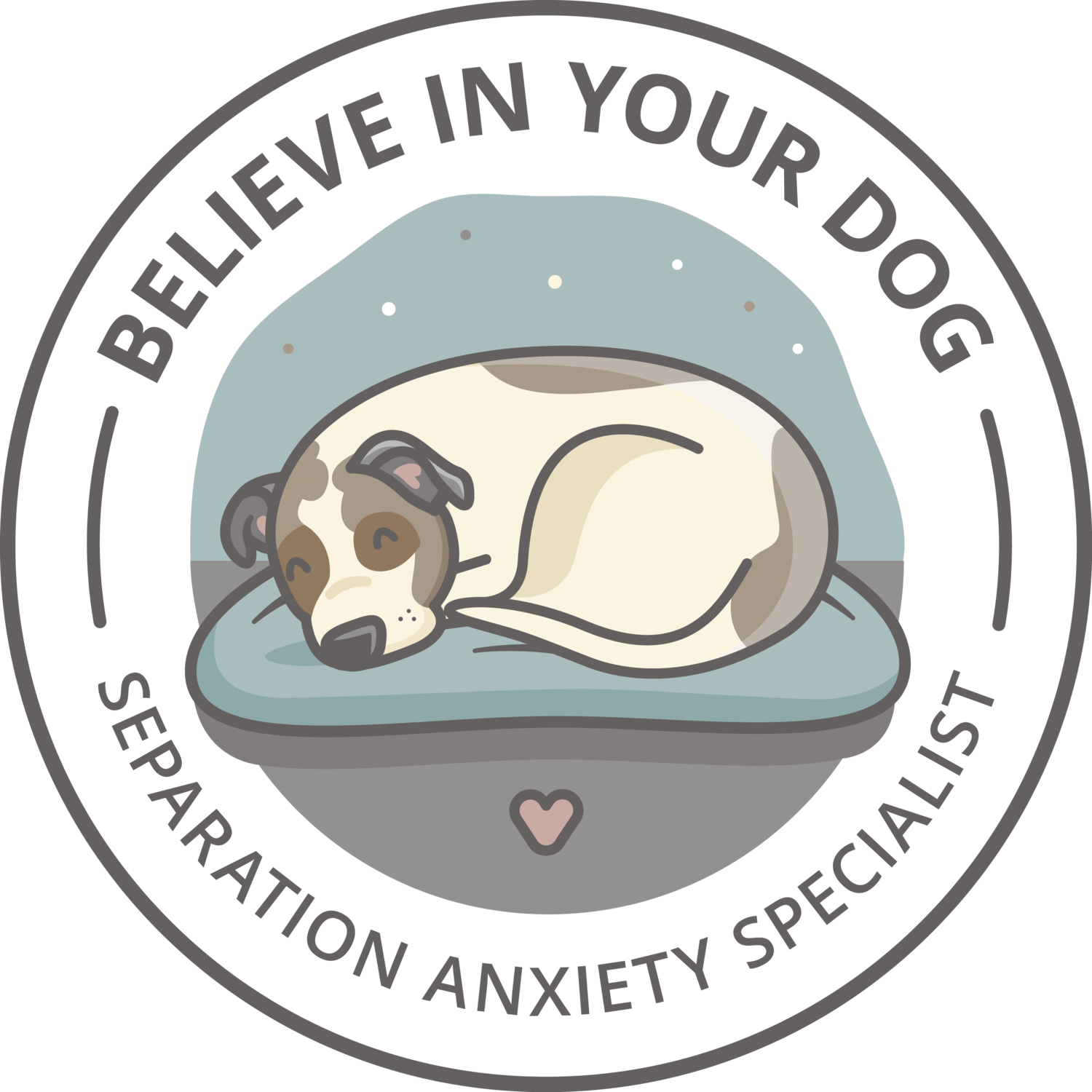5 Reasons Why Separation Anxiety Training Is Done Online
When you think of hiring a dog trainer, what do you visualize? Thanks to popular media, many of us picture some sort of hero who comes through the front door and immediately exudes an energy that magically “fixes” our dogs. With this pedagogy, the trainer has to be in the flesh. This mystical energy can’t be transmitted through a laptop, right?
It’s a logical assumption, but here’s the truth: When it comes to separation anxiety training (and all dog training for that matter), the best trainers don’t need to be physically present to create lasting behavior change. This is because there is no magic in dog training. All that’s needed to teach your dog that being alone is safe are incremental plans, competent criteria-setting, and body language literacy. To bring that to the table, all we need is a camera and a keyboard.
If that’s not enough for you, here are 5 other reasons why separation anxiety training is done online.
1. No matter where you are in the world, you can work with a separation anxiety specialist
Unfortunately, there aren’t many of us out there. Reputable trainers typically don’t take these types of cases unless they’ve completed one of the two separation anxiety specialization programs out there. So there’s a mismatch: a real shortage of qualified help available and lots of dogs with separation-related problems. But because of the remote training model, you don’t need to have one of the few separation anxiety specialists in your area to work with one.
2. Consistency with training
Alone time training simply doesn’t work if the trainer is present. The dog needs to be alone to learn that being alone is safe. Of course we need to start with small increments that the dog can handle, but those increments usually involve some version of the dog being alone right from the start.
We dog trainers are usually very salient stimuli – so salient that many dogs never even exhibit any of the behaviors we’re hired to address in our presence. We predict all kinds of awesome things; we’re the human equivalent of slot machines. Professional dog trainers refer to this as the “trainer effect.” Dogs become too focused on our every move to fully process the other things that might be going on in the environment (like the owner being absent). So it’s best to simply remove us from the physical equation all together in separation anxiety training.
3. Flexible scheduling
With the traditional model of in-person dog training and behavior counseling, clients often need to take off work and/or rearrange other evening and weekend activities to accommodate private consults or group classes. With separation anxiety training, clients are given training assignments to complete on their time, whenever it makes sense in their busy schedules. Weekly live assessments are also more flexible because you only need to factor in the time it takes you to hop on your computer – forget about commute times, tidying up your house, or making sure your family isn’t disruptive.
4. Dogs who are afraid of strangers can benefit from training right from the start
Valuable time that would normally be spent on first getting a stranger danger dog comfortable with the trainer can be allocated to the alone-time protocol. Which means that you’ll see results more quickly and efficiently, getting you closer to having your life back.
5. You can train in your pajamas
I was shocked to learn that many schools implemented a “no pajamas policy” for remote learning over the course of the pandemic. I’m here to promise you that there is no dress code at Believe in Your Dog. You’ve got enough to worry about when your dog is suffering from separation-related behaviors; getting dolled up shouldn’t be one of them.
Final Thoughts
It’s for all these reasons that training for separation-related behaviors has always been done online, even before the pandemic. Separation anxiety trainers didn’t need to figure out anything new when COVID hit; we already had the remote model down to a science.
Still uncertain? Have a gander at the testimonials from the many clients I’ve worked with who have gotten the help they need from me through a computer screen.


